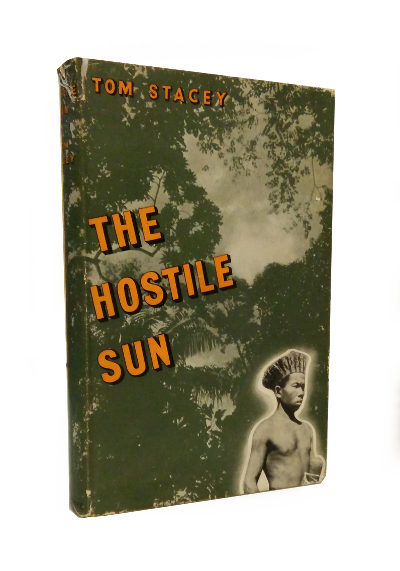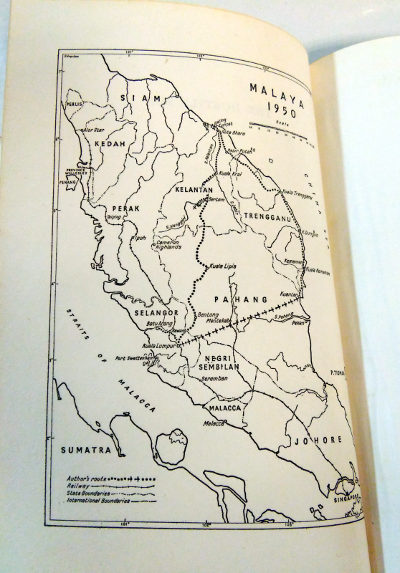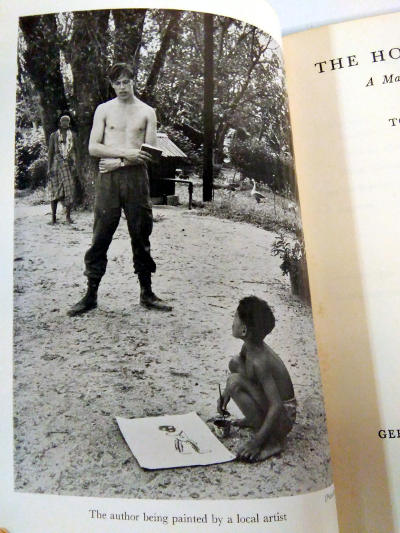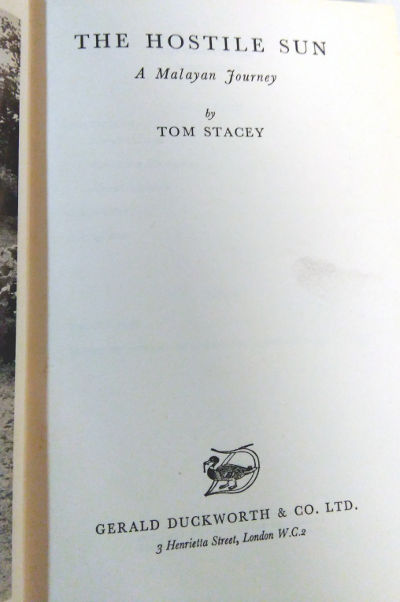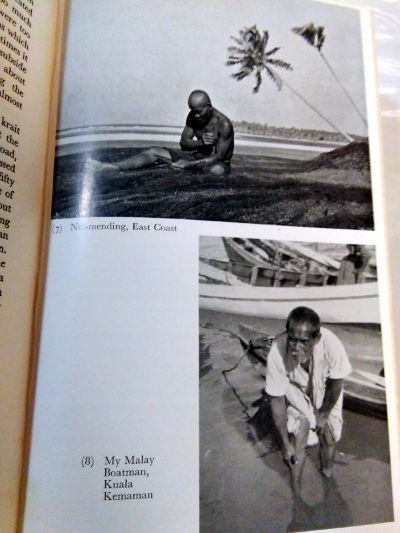About the book (from jacket flap):
A young man only a few weeks past his 20th birthday tells the story of a journey into the Malayan jungle in 1950 to make contact with a group of Temiar, a small section of nearly extinct aborigines, some of whom had not seen a European of any kind since the 1930s. These are the very words that the author wrote up each evening in his diary during the 15 days of his trip, so that scenes and people are described with the maximum vividness and accuracy, and the whole preserves a most attractive air of youthful spontaneity.
It is interesting to watch this strange and compelling story grow in its young author’s hands, and to share in his moments of contemplation and discovery. He enters into the problem of the Malayan aborigines, who now find themselves desperately enfeebled, with the choice between slow extinction in the jungle where Chinese Communists are now at large, or the adoption of civilised ways of life entirely beyond their comprehension.
About the author (from Wikipedia):
Tom Stacey FRSL (born 11 January 1930) is a British novelist, publisher, screenwriter, foreign correspondent, and penologist.
With the Scots Guards (1948–50), in which he received his commission as Second Lieutenant, on active service in what is now known as peninsular Malaysia, he spent his leave with the Temiar aborigines in the jungle, and wrote his first book (The Hostile Sun).
At Worcester College, Oxford, England (1950–51), he founded and co-organised the controversial students’ tour operation, Undergrad Tours, during the 1951 Festival of Britain year.
He was staff writer at the Lilliput Magazine (1951–52), as a colleague of Patrick Campbell and Maurice Richardson. He then became feature writer and foreign correspondent for Picture Post (1952–54). During 1954 he became the Daily Express (London) ‘Express Explorer’ in which he crossed Africa overland from the Atlantic to East Africa, accompanied by Ugandan Cambridge university graduate Erisa Kironde, and lived with the Bakonzo people of the Ruwenzori Mountains.
Briefly a roving correspondent for the Montreal Star (1955–56), he rejoined the Daily Express in 1956–60 as foreign correspondent and diplomatic correspondent, with a spell as daily America columnist in 1957. He joined The Sunday Times as roving correspondent and chief foreign correspondent (1960–65), with a worldwide brief, covering the dismantling of the British Empire globally, and major conflict zones of the period, and interviewing many heads of state (including Nikita Khrushchev, Morarji Desai, Ayub Khan, Harold Macmillan, and Éamon de Valera).
He then moved to the London Evening Standard (1965–67), where he was a columnist and roving correspondent, while standing for Parliament. Subsequent freelance assignments were undertaken for The Times, The Sunday Telegraph, The Daily Telegraph, The Observer, Daily Mail, and The Spectator. In all, Stacey has reported from over 120 countries, many of them several times.
In 2001 Stacey ascended to the Ruwenzori glaciers following the defeat of the ADF guerilla invaders from the Congo. His 500-page work Tribe, the Hidden History of the Mountain of the Moon (2003) proved to be of decisive influence in Uganda’s recognition of the Kingdom of Rwenzururu as one of the five Kingdoms of the country’s Bantu south.
In 2009 Stacey was hailed by the approximately 800,000 people of the Ruwenzori Mountains as ‘catalytic agent’ in the recognition by the Government of Uganda of their ethno-cultural entity, Rwenzururu, with its King who is now in remand (28/11/2016) in Kampala for allegedly inciting violence, rebellion and calling for independence from Uganda, in clashes reported to leave over 50 people dead.

